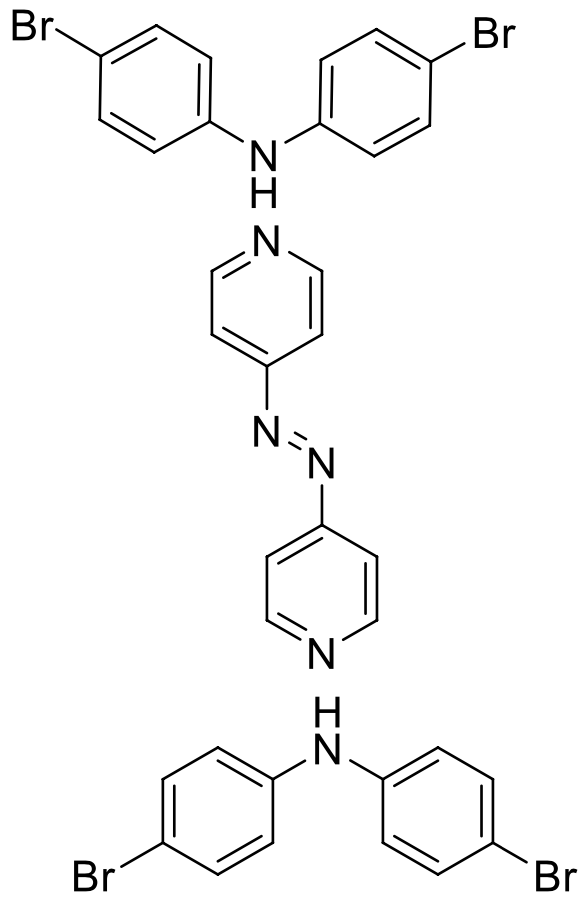Organic Optoelectronics

This research studied the charge transfer complex of bis(4-bromophenyl)amine and 4,4"-azopyridine (abbreviated as BrDPA-AzoBipy), shown to the right:
The goal was to find optimal twisting conditions so it can be used in organic optoelectronics's active layer.
Results
- Speaking at the ARISE Colloquium about Organic Optoelectronics
- Feature on Spectrum NY1
- Lab report
- 12 papers read
- 20 pages of notes
- 17 experiments
- 445 captured pictures
Conclusion: Optimal Conditions for Twisting BrDPA-AzoBipy
- Additive: damar 12 wt% gum
- Melting temperature: 140°C
- Cooling temperature: 70°C
Characterization
- Absorbance of a wide spectrum.
- Not good for photoluminescent. Not fluorescent.
- X-Ray diffraction (from UNAM)
Explaining the Labwork to a General Audience
Presenting at the ARISE colloquium
This research was featured on Spectrum NY1's local news.